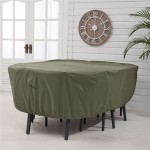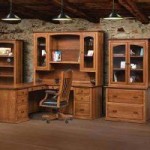How to Make Furniture Look Distressed
Distressing furniture is a technique that intentionally ages and wears down the appearance of a piece to achieve a rustic, vintage, or shabby chic aesthetic. This process can be applied to new or existing furniture and involves various methods to simulate the effects of time and use. Achieving a convincingly distressed look requires careful planning, preparation, and execution.
The overall goal is to create a visually interesting surface that tells a story, implying years of handling and exposure. This is accomplished by strategically removing paint, creating dents and scratches, and applying finishing techniques that enhance the aged appearance. The key to successful distressing lies in moderation and authenticity; overdoing it can result in a piece that looks artificially damaged rather than genuinely aged.
Preparing the Furniture for Distressing
The initial step in distressing furniture is thorough preparation. This involves cleaning and assessing the existing finish. The cleaning process removes dirt, grease, and grime that can interfere with paint adhesion and the distressing techniques. A mild detergent and water solution, followed by a clean water rinse and thorough drying, are generally sufficient for cleaning.
After cleaning, the existing finish must be evaluated. If the existing finish is peeling, chipping, or otherwise compromised, it is advisable to remove it entirely. Sanding is the most common method for removing old finishes. Begin with a coarser grit sandpaper (e.g., 80-grit) to remove the bulk of the finish, then gradually move to finer grits (e.g., 120-grit, 220-grit) to smooth the surface. For intricate carvings or hard-to-reach areas, chemical strippers can be used, following the manufacturer's instructions carefully.
If the existing finish is in good condition, light sanding is sufficient to create a "tooth" for the new paint to adhere to. This involves using a fine-grit sandpaper (e.g., 220-grit) to scuff the surface. After sanding, remove dust with a tack cloth to ensure a clean surface for painting. Consider the existing color of the furniture. If it contrasts significantly with the desired base coat color, priming may be necessary to prevent bleed-through.
Priming is also crucial for porous surfaces like raw wood. A quality primer seals the wood and creates a uniform surface for painting. Apply the primer according to the manufacturer's instructions, allowing it to dry completely before proceeding to the next step.
Applying Paint and Creating Texture
Choosing the right paint is crucial for achieving the desired distressed look. Latex paint is a popular choice due to its durability, ease of application, and wide range of colors. Chalk paint is another option, known for its matte finish and excellent adhesion, often requiring less prep work. Milk paint offers a more authentic, historical look and can naturally chip and crack, enhancing the distressed effect. Consider the desired aesthetic and the type of furniture when selecting the paint.
Apply the base coat of paint evenly, using a brush, roller, or sprayer. The number of coats will depend on the paint's coverage and the desired opacity. Allow each coat to dry completely before applying the next. Sanding lightly between coats can help create a smoother finish.
Once the base coat is dry, consider adding a second coat of a contrasting color. This top coat will be partially removed during the distressing process to reveal the base coat underneath. The choice of colors will significantly impact the final look. For example, a dark base coat with a light top coat can create a dramatic contrast, while subtle color variations can achieve a more understated effect.
Before the top coat dries completely, the distressing process can begin. Several techniques can be used to create texture and simulate wear. Sandpaper is a common tool for removing paint, particularly along edges, corners, and areas that would naturally experience wear. The amount of pressure and the grit of the sandpaper will determine the degree of distressing. Start with a light touch and gradually increase pressure as needed.
Another effective technique is using a putty knife or scraper to remove paint in random areas. This creates a more irregular and organic look. Experiment with different angles and pressures to achieve varied effects. Avoid creating overly symmetrical or repetitive patterns, as this can detract from the authenticity of the distressed look.
For a more aggressive distressing effect, consider using a hammer, chain, or other tools to create dents and scratches. Protect the surrounding areas with tape to prevent unintended damage. Apply the tools with controlled force, focusing on areas that would naturally experience impact. Remember to work in a well-ventilated area and wear appropriate safety gear, such as eye protection.
Dry brushing is a technique where a brush with very little paint is dragged across the surface. This creates a textured, streaked effect that can simulate wood grain or aged paint. Use a stiff-bristled brush and remove most of the paint before applying it to the furniture. Experiment with different angles and pressures to achieve the desired texture.
Finishing and Sealing the Distressed Furniture
After distressing the furniture to the desired degree, it is essential to seal and protect the finish. This prevents further wear and tear and enhances the overall appearance. Various finishing products can be used, depending on the desired level of sheen and protection.
Wax is a popular choice for sealing distressed furniture, particularly pieces painted with chalk paint or milk paint. Wax provides a soft, matte finish that enhances the aged look. Apply the wax with a brush or cloth, working it into the surface in circular motions. Allow the wax to dry for several minutes, then buff it with a clean cloth to a soft sheen. Dark waxes can be used to add depth and accentuate the distressed areas. Apply the dark wax sparingly and blend it well to avoid an unnatural appearance.
Polyurethane is a more durable option for sealing distressed furniture, particularly pieces that will be subjected to heavy use. Polyurethane provides a hard, protective coating that is resistant to scratches, stains, and water damage. Apply the polyurethane in thin, even coats, allowing each coat to dry completely before applying the next. Lightly sand between coats to create a smoother finish. Polyurethane is available in various sheens, from matte to high gloss. A matte or satin finish is generally preferred for distressed furniture, as it maintains the aged look.
Varnish is another option for sealing distressed furniture. Varnish is similar to polyurethane but typically provides a warmer tone and a slightly more durable finish. Apply varnish in the same manner as polyurethane, following the manufacturer's instructions carefully.
Antiquing glazes can be used to further enhance the distressed look. These glazes are typically applied over the sealed finish and then wiped away, leaving the glaze in the crevices and textured areas. This accentuates the distressing and creates a more aged appearance. Experiment with different colors of antiquing glaze to achieve the desired effect. Apply the glaze sparingly and blend it well to avoid an unnatural look.
After applying the finishing product, allow it to cure completely before using the furniture. Curing times vary depending on the product, so consult the manufacturer's instructions. Avoid placing heavy objects on the furniture during the curing process to prevent damage.
By following these steps, individuals can confidently distress furniture and create unique, personalized pieces that add character and charm to living spaces. Successful distressing requires patience, attention to detail, and a willingness to experiment. The results, however, are well worth the effort.

How To Distress Furniture Hgtv

Rustic Rehab 7 Ways To Distress Furniture Get That Antique Look

3 Best Ways How To Distress Wood And Furniture With Paint Angela Marie Made

The Beginner S Guide To Distressing Furniture With Chalk Paint

How To Make New Wood Look Old Rustic Young House Love

Distressed Furniture Diy 8 Easy Ways That Work The Honeycomb Home

How To Distress Furniture Creating Natural Aged Look

How To Paint And Distress Furniture Diy Farmhouse Style The House On Silverado

How To Make White Furniture Look Distressed And Naturally Worn

How To Make White Furniture Look Distressed And Naturally Worn
See Also








